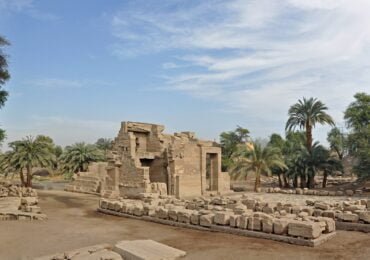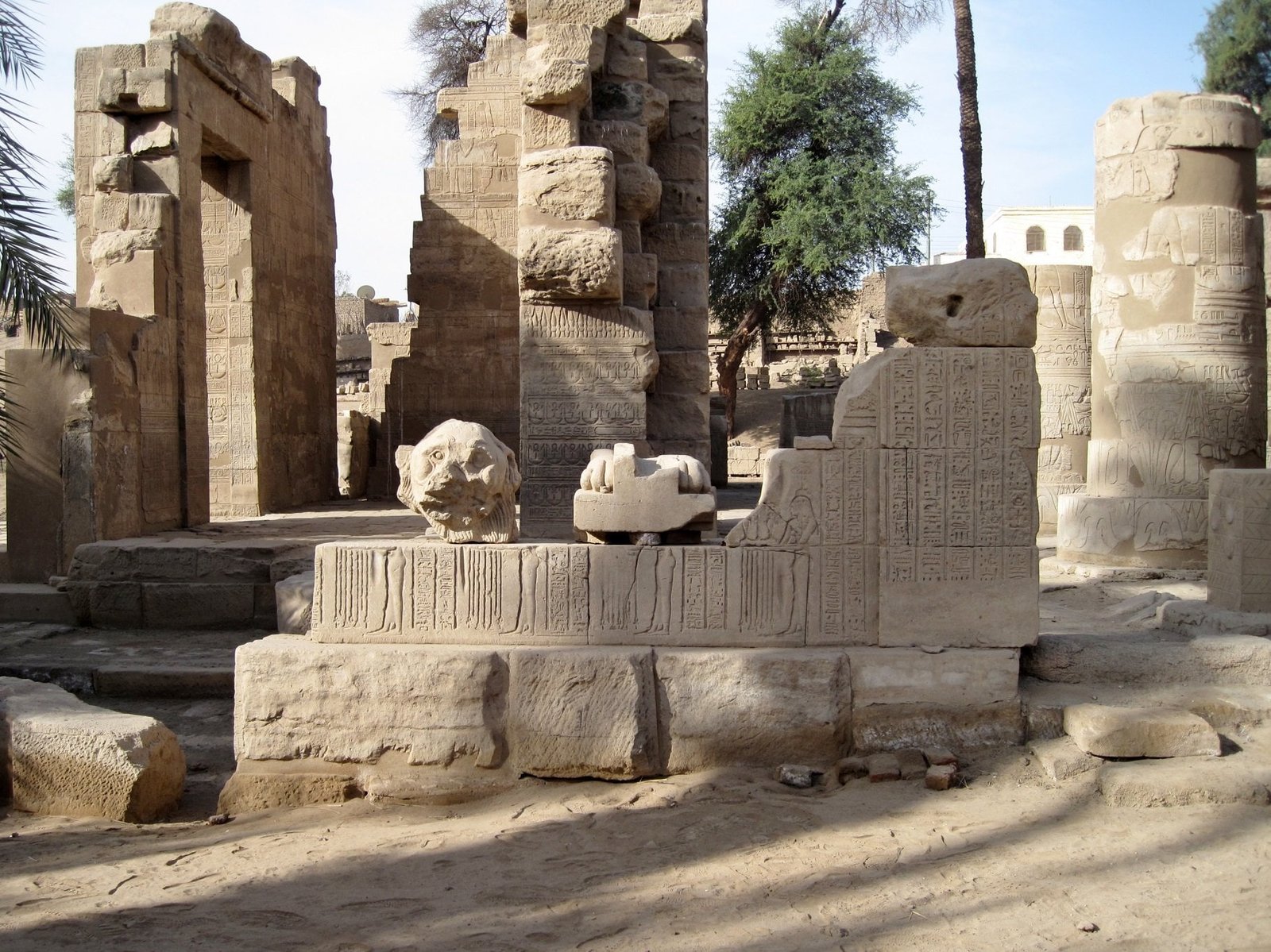El-Tod Temple is 20km (12 miles) southwest of Luxor on the east bank of the Nile. To get there, hire a taxi from Luxor and it takes about 30 minutes. Buy your entrance ticket of El-Tod Temple from the Luxor Temple in Luxor before heading there.
History of El-Tod Temple
The history of the El-Tod Temple can be traced to the Old Kingdom Period of Egyptian history. A granite pillar of the 5th Dynasty pharaoh, Userkaf, is the oldest object found at El-Tod Temple.
A Middle Kingdom temple complex at the site was mostly dedicated to the cult of the important Egyptian god, Montu. Montu was the god of was with falcon-head with two plumes on the top. Blocks have been discovered with the names of Mentuhotep II and Mentuhotep III. Senwosret I replaced the original temple with a new one. With further additions made under Ptolemy VIII.
In 1936 a French team of archaeologists discovered four copper chests in the name of King Amenemhet II under the remains of Senwosret I’s temple. Within the chests lapis lazuli, silver, and some gold objects were found. The items seem to have originated from various parts of the world. Indicating trade contacts between the Ancient Egyptians and other early civilizations. The treasure is now to be found in the Egyptian Museum in Cairo, and also in the Louvre in Paris.
New Kingdom & Greco-Roman at El-Tod Temple

A mass jigsaw puzzle of hundreds of blocks dating from the Old Kingdom to the Greek and Roman Period can be seen lined up ready to be assembled and returned to their original positions within the monuments.
A Roman kiosk was located near the Ptolemaic temple. North of the two Ptolemaic halls there was a lake dug out, either while or shortly after the halls were built.
How to get to El-Tod Temple from Luxor?
To visit El Tod Temple from Luxor, follow these steps:
1. By Taxi
- Distance: El Tod Temple is approximately 20 kilometers (12 miles) south of Luxor.
- Duration: A 30–40 minute drive.
- Tips: Arrange a private taxi or car hire from your hotel or tour provider in Luxor.
2. By Public Transportation
- Option: Take a minibus heading south from Luxor to Tod village.
- Duration: Around 40–50 minutes, depending on stops.
- Tips: Ask locals or your hotel staff for assistance in locating minibuses heading to Tod.
3. Guided Tour
- Egypt Best Vacations offers many Luxor day tours include El Tod Temple as part of their itinerary. This option provides transportation, a guide, and added insights.
4. Cycling (For Adventurous Travelers)
- Option: Rent a bicycle and follow the road south to El Tod village.
- Duration: Approximately 1.5–2 hours depending on your pace.
- Tips: Ensure you have water, sunscreen, and a map or GPS.
Entry Information
El Tod Temple is open to visitors daily. Tickets can usually be purchased from Luxor Tempe or arranged in advance through a tour company or book them online.
Enjoy the serene and less-crowded atmosphere of this ancient site, which holds unique historical significance!

